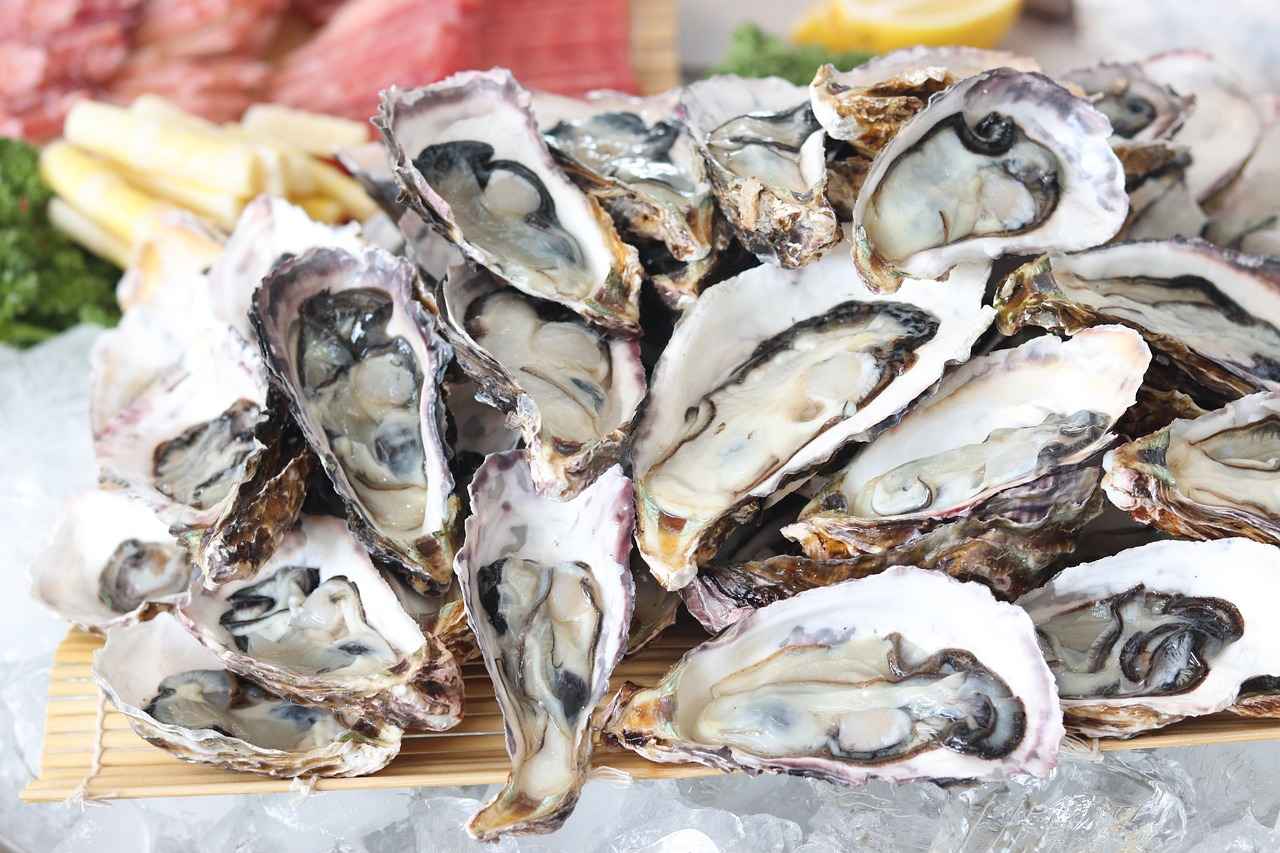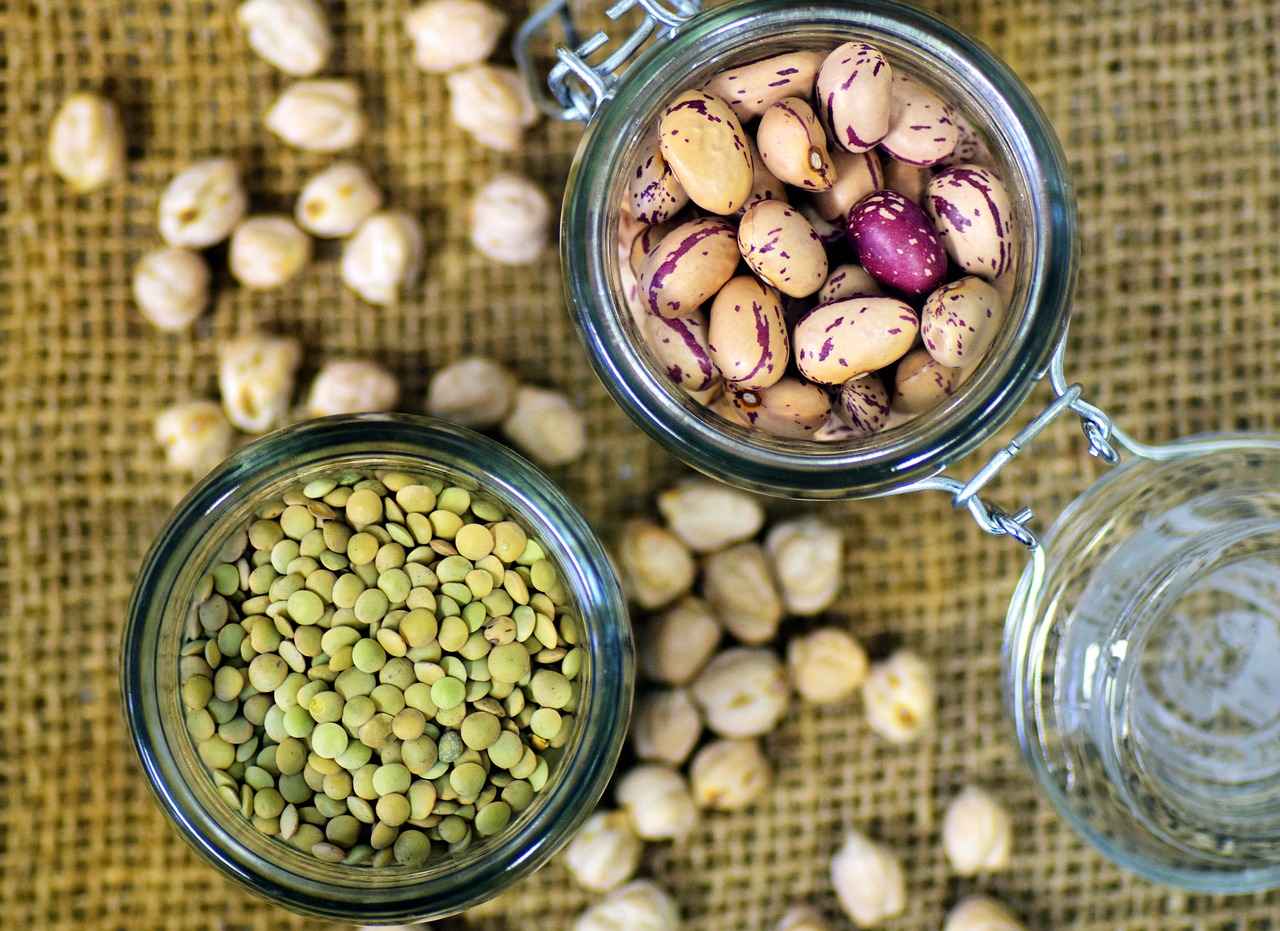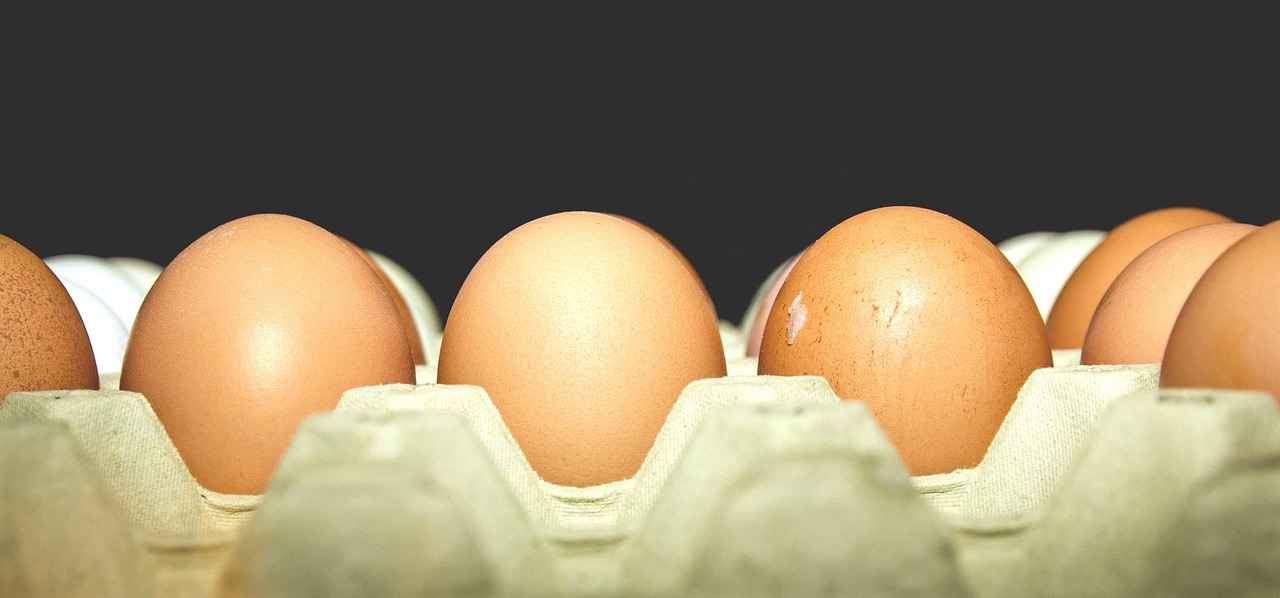This article delves into the benefits of plant-based protein for muscle growth, examining its various sources, nutritional value, and effectiveness compared to animal proteins. Discover how to seamlessly incorporate plant-based protein into your diet for optimal results.
1. Understanding Plant-Based Protein
Plant-based protein is derived from a variety of plant sources, making it a viable alternative to traditional animal proteins for muscle building. Common sources include legumes, nuts, seeds, and whole grains, each providing unique benefits for muscle growth.
2. Nutritional Profile of Plant-Based Proteins
Plant-based proteins offer a rich array of essential amino acids, vitamins, and minerals. These nutrients play a crucial role in muscle repair and overall health, making them essential for anyone looking to enhance their fitness.
- Essential Amino Acids: These are vital for muscle repair. Sources like quinoa and soy are complete proteins, providing all essential amino acids.
- Vitamins and Minerals: Nutrients such as iron, calcium, and magnesium found in plant-based proteins support muscle function and recovery.
3. Popular Plant-Based Protein Sources
Incorporating a variety of plant-based proteins into your meals can significantly enhance muscle growth:
- Legumes: Lentils and chickpeas are excellent sources of protein and fiber.
- Nuts and Seeds: Almonds, chia seeds, and hemp seeds provide healthy fats along with protein.
4. Comparing Plant-Based and Animal Proteins
When comparing plant-based proteins to animal proteins, it’s essential to consider factors like bioavailability and muscle protein synthesis. While animal proteins are often considered complete, many plant proteins can also support muscle growth effectively.
5. Practical Tips for Incorporating Plant-Based Protein
To meet your protein needs, consider meal planning strategies that include:
- Balanced Meals: Combine different protein sources to ensure a complete amino acid profile.
- Delicious Recipes: Try smoothies with pea protein, or salads topped with quinoa and nuts.
6. Common Myths About Plant-Based Protein
Addressing misconceptions is crucial. Many believe that plant-based diets lack sufficient protein, but with proper planning, it’s entirely possible to meet and exceed protein needs.
7. Conclusion: Embracing Plant-Based Protein for Muscle Growth
In conclusion, plant-based protein offers numerous benefits for muscle growth and overall health. By understanding its sources and nutritional value, individuals can effectively incorporate it into their diets for optimal results.

1. Understanding Plant-Based Protein
Understanding Plant-Based Protein
Plant-based protein is an essential component of a healthy diet, derived from various plant sources such as legumes, grains, nuts, and seeds. Unlike animal proteins, which come from meat, dairy, and eggs, plant-based proteins provide a viable alternative that supports muscle building and overall health. This section will explore the definition of plant-based protein, the different types available, and how they can effectively replace traditional animal proteins.
Definition of Plant-Based Protein
Plant-based protein refers to the protein content found in plants. It is not only a source of protein but also provides essential nutrients, fiber, and antioxidants that contribute to overall health. Many individuals are turning to plant-based diets for various reasons, including health benefits, ethical considerations, and environmental sustainability.
Types of Plant-Based Proteins
- Legumes: Includes beans, lentils, and peas, which are high in protein and fiber.
- Nuts and Seeds: Almonds, chia seeds, and flaxseeds are rich in protein and healthy fats.
- Whole Grains: Quinoa, brown rice, and oats provide protein along with essential carbohydrates.
- Vegetables: Some vegetables, like spinach and broccoli, also contain protein, although in smaller amounts.
Viable Alternative to Animal Proteins
For those looking to build muscle, plant-based protein can be just as effective as animal protein. Research indicates that with proper planning, individuals can obtain all necessary essential amino acids from plant sources. This is crucial for muscle repair and growth. Furthermore, plant-based diets are often lower in saturated fats and cholesterol, contributing to better heart health.
In conclusion, understanding plant-based protein is vital for anyone considering a shift towards a more plant-centric diet. With a variety of options available, individuals can enjoy the benefits of protein without relying solely on animal products.

2. Nutritional Profile of Plant-Based Proteins
Nutritional Profile of Plant-Based Proteins
In the quest for optimal health and muscle growth, understanding the nutritional profile of plant-based proteins is crucial. These proteins are not only rich in essential amino acids but also packed with vitamins and minerals that contribute to overall health.
Essential Amino Acids
Amino acids are the building blocks of proteins, and among them, essential amino acids (EAAs) are vital as they cannot be synthesized by the body. Plant-based sources such as quinoa, soy, and chia seeds provide these crucial EAAs. For instance, quinoa is considered a complete protein because it contains all nine essential amino acids, making it a valuable addition to a plant-based diet.
Vitamins and Minerals
Plant-based proteins are also rich in various vitamins and minerals that support muscle function and recovery. Key nutrients include:
- Iron: Essential for oxygen transport in the blood, found in lentils and beans.
- Calcium: Important for muscle contractions, abundant in leafy greens like kale.
- Magnesium: Supports muscle relaxation, found in nuts and seeds.
These nutrients not only aid in muscle growth but also enhance overall health by boosting the immune system and promoting recovery after intense workouts.
Comparison with Animal Proteins
While animal proteins are often praised for their high bioavailability, many plant-based proteins offer comparable benefits when consumed in adequate amounts. Combining different plant sources can ensure a complete amino acid profile, making them a viable alternative for those seeking to build muscle without relying on animal products.
In summary, the nutritional profile of plant-based proteins is diverse and beneficial, providing essential amino acids, vitamins, and minerals that contribute to muscle growth and overall health. By incorporating a variety of plant-based protein sources into your diet, you can optimize your nutrition and support your fitness goals.
2.1 Essential Amino Acids
Essential amino acids play a vital role in supporting muscle repair and growth. Unlike non-essential amino acids, which can be synthesized by the body, essential amino acids must be obtained through diet. This section will explore the plant-based sources of these amino acids and how they compare to animal protein sources.
There are nine essential amino acids that our bodies require for optimal functioning: histidine, isoleucine, leucine, lysine, methionine, phenylalanine, threonine, tryptophan, and valine. Each of these amino acids contributes uniquely to muscle development and recovery.
| Amino Acid | Plant Sources | Animal Sources |
|---|---|---|
| Leucine | Peas, lentils, quinoa | Chicken, beef, fish |
| Lysine | Legumes, tofu, pumpkin seeds | Pork, dairy, eggs |
| Valine | Brown rice, nuts, soybeans | Fish, poultry, beef |
When comparing plant-based proteins to animal proteins, it is essential to consider protein quality and bioavailability. While animal proteins are often regarded as complete proteins, meaning they contain all essential amino acids in adequate amounts, many plant proteins are classified as incomplete. However, by combining different plant sources, such as beans and rice, one can achieve a complete amino acid profile.
Digestibility is another factor to consider. Animal proteins typically have higher digestibility rates compared to most plant proteins. However, with proper preparation methods, such as soaking and sprouting, the digestibility of plant proteins can be improved significantly.
In conclusion, while animal proteins have long been considered the gold standard for muscle growth, numerous plant-based sources can provide all essential amino acids necessary for effective muscle repair and growth. With a well-planned diet, individuals can thrive on plant-based proteins without compromising their nutritional needs.
2.1.1 Complete vs. Incomplete Proteins
Understanding the distinction between complete and incomplete proteins is crucial for anyone looking to optimize their nutrition, especially in a plant-based diet. Proteins are essential macronutrients that play a vital role in muscle growth, repair, and overall health. They are made up of amino acids, some of which are classified as essential because the body cannot produce them, necessitating their intake from food sources.
Proteins are categorized into two types: complete proteins and incomplete proteins. Complete proteins contain all nine essential amino acids in sufficient quantities needed by the body. Animal proteins, such as meat, dairy, and eggs, are typically complete proteins. However, certain plant-based sources also qualify as complete proteins, which is significant for those following a vegan or vegetarian lifestyle.
Examples of complete plant-based proteins include:
- Quinoa – A versatile grain rich in protein and fiber.
- Chia Seeds – Packed with omega-3 fatty acids and protein.
- Hemp Seeds – A complete protein source that also provides healthy fats.
- Soy Products – Such as tofu and tempeh, which are excellent protein sources.
- Amaranth – Another grain that offers a complete amino acid profile.
On the other hand, incomplete proteins lack one or more essential amino acids. Most plant proteins fall into this category, including beans, lentils, nuts, and grains. However, by combining different sources of incomplete proteins, such as rice and beans or peanut butter on whole-grain bread, one can achieve a complete amino acid profile. This practice is known as protein complementation and is essential for those relying solely on plant-based diets.
In summary, understanding the difference between complete and incomplete proteins empowers individuals to make informed dietary choices. By incorporating a variety of protein sources and utilizing protein complementation, anyone can achieve a balanced intake of essential amino acids necessary for optimal health and muscle growth.
2.1.2 Protein Digestibility
Protein Digestibility plays a crucial role in muscle growth, as it determines how effectively the body can break down and utilize protein from various sources. When comparing plant-based proteins to animal proteins, several key factors come into play that can significantly impact athletes and fitness enthusiasts.
Animal proteins, such as those found in meat, dairy, and eggs, are often regarded as complete proteins because they contain all nine essential amino acids in sufficient quantities. This high bioavailability means that the body can easily absorb and utilize these proteins for muscle repair and growth. In contrast, many plant-based proteins, such as those from legumes, grains, and nuts, may lack one or more essential amino acids, making them incomplete proteins.
However, this does not mean that plant-based proteins are inferior. By combining different sources, such as rice and beans, individuals can achieve a complete amino acid profile. Additionally, some plant proteins, like quinoa and soy, are considered complete on their own, providing a viable option for those following a plant-based diet.
Another important aspect to consider is the digestibility of these proteins. Animal proteins generally have a higher digestibility score, meaning that a greater percentage of the protein consumed is absorbed by the body. Plant proteins, on the other hand, often contain antinutrients such as phytates and lectins, which can hinder protein absorption. However, cooking, soaking, or fermenting plant foods can reduce these antinutrients, enhancing protein digestibility.
For athletes and fitness enthusiasts, understanding these differences is essential for optimizing protein intake. While animal proteins may offer immediate benefits in terms of muscle recovery and growth, incorporating a variety of plant-based proteins can provide additional health benefits, such as improved digestion and reduced inflammation.
In conclusion, while animal proteins may have an edge in digestibility and amino acid completeness, a well-planned plant-based diet can still support muscle growth effectively. By understanding the nuances of protein digestibility, individuals can make informed dietary choices that align with their fitness goals.
2.2 Vitamins and Minerals
Vitamins and minerals are essential components that significantly influence muscle function and recovery. For individuals engaged in physical activities, understanding the role of these nutrients is crucial for optimizing performance and enhancing recovery.
Plant-based proteins are not only a source of protein but also a rich reservoir of vitamins and minerals that support muscle health. Here, we delve into some of the key nutrients found in these proteins:
| Nutrient | Role in Muscle Health | Sources |
|---|---|---|
| Magnesium | Helps in muscle contraction and relaxation, reducing cramps. | Spinach, quinoa, almonds |
| Iron | Essential for oxygen transport in the blood, enhancing endurance. | Lentils, chickpeas, pumpkin seeds |
| Calcium | Vital for muscle contraction and bone health. | Broccoli, kale, fortified plant milks |
| Vitamin D | Supports calcium absorption and muscle function. | Mushrooms, fortified foods |
| Vitamin B12 | Important for energy production and muscle recovery. | Fortified cereals, nutritional yeast |
Incorporating a variety of these nutrient-rich foods into a plant-based diet can significantly enhance muscle growth and recovery. For instance, including legumes, nuts, and leafy greens not only boosts protein intake but also ensures adequate levels of essential vitamins and minerals.
To maximize the benefits, it’s recommended to combine different sources of plant proteins, which can improve the overall amino acid profile and nutrient absorption. This approach not only supports muscle health but also contributes to overall well-being.
In conclusion, a well-planned plant-based diet that emphasizes the intake of vitamins and minerals can play a pivotal role in muscle function and recovery, making it an excellent choice for athletes and fitness enthusiasts alike.

3. Popular Plant-Based Protein Sources
Popular Plant-Based Protein Sources play a vital role in supporting muscle growth and overall health. This section will explore various plant-based protein sources, including legumes, nuts, seeds, and grains, detailing their protein content and the benefits they offer for muscle development.
| Protein Source | Protein Content (per 100g) | Benefits for Muscle Growth |
|---|---|---|
| Lentils | 9g | High in fiber and essential amino acids, lentils aid in muscle recovery and growth. |
| Chickpeas | 8.9g | Rich in protein and complex carbohydrates, they provide sustained energy for workouts. |
| Quinoa | 4.1g | A complete protein source containing all nine essential amino acids, ideal for muscle repair. |
| Almonds | 21g | Packed with healthy fats and protein, they support muscle recovery and energy levels. |
| Chia Seeds | 17g | High in omega-3 fatty acids and protein, they help reduce inflammation and promote recovery. |
Legumes, such as lentils and chickpeas, are not only rich in protein but also provide essential nutrients like fiber and iron. These nutrients are crucial for muscle repair and overall health. Incorporating legumes into your diet can be as simple as adding them to salads, soups, or stews.
Nuts and seeds are another excellent source of plant-based protein. For instance, almonds and chia seeds are nutrient-dense options that provide healthy fats alongside protein. They can be enjoyed as snacks, added to smoothies, or sprinkled on top of yogurt or oatmeal for an extra protein boost.
Finally, grains like quinoa are unique because they contain all nine essential amino acids, making them a complete protein source. Quinoa can be used in various dishes, from salads to grain bowls, providing a versatile option for those looking to increase their protein intake.
In conclusion, incorporating a variety of these plant-based protein sources into your diet not only supports muscle growth but also promotes overall health and well-being. By understanding their benefits and how to use them, you can optimize your nutrition for better fitness results.
3.1 Legumes
Legumes are a powerhouse of nutrition, offering a rich source of protein and fiber that supports muscle growth and overall health. This section delves into popular legumes such as lentils and chickpeas, discussing their unique benefits and practical ways to incorporate them into your meals.
| Legume | Protein Content (per 100g) | Fiber Content (per 100g) | Health Benefits |
|---|---|---|---|
| Lentils | 9g | 8g | Rich in iron and folate; supports heart health |
| Chickpeas | 8.9g | 7.6g | Excellent for digestive health; helps in weight management |
Muscle-Building Benefits: Both lentils and chickpeas are excellent sources of plant-based protein that can help in muscle repair and growth. Their high fiber content also aids in digestion and keeps you feeling full longer, making them ideal for those looking to maintain a healthy weight while building muscle.
- Incorporating Lentils: Add lentils to soups, stews, or salads for a nutritious boost. They can also be blended into dips or spreads, such as lentil hummus.
- Using Chickpeas: Chickpeas can be roasted for a crunchy snack, added to salads, or blended into hummus. They serve as a versatile ingredient in various dishes.
In conclusion, integrating legumes like lentils and chickpeas into your diet is an effective way to enhance your protein intake while enjoying numerous health benefits. By experimenting with different recipes and cooking methods, you can easily include these nutrient-dense foods in your meals and support your muscle-building goals.
3.2 Nuts and Seeds
Nuts and seeds are not only delicious but also packed with essential nutrients that play a significant role in muscle growth. These small powerhouses are rich in healthy fats, protein, vitamins, and minerals, making them an ideal addition to any fitness-focused diet.
In this section, we will explore various types of nuts and seeds, their nutritional profiles, and how they can contribute to muscle development.
| Nuts/Seeds | Protein (per 100g) | Healthy Fats (g) | Benefits for Muscle Growth |
|---|---|---|---|
| Almonds | 21g | 49g | Rich in vitamin E and magnesium, which supports muscle recovery. |
| Walnuts | 15g | 65g | High in omega-3 fatty acids, beneficial for reducing inflammation. |
| Chia Seeds | 17g | 31g | Loaded with fiber and antioxidants, promoting overall health. |
| Flaxseeds | 18g | 42g | Excellent source of lignans and omega-3s, aiding in muscle repair. |
Incorporating nuts and seeds into your diet can be both easy and enjoyable. Here are some delicious ways to enjoy these nutrient-dense foods:
- Snack Mix: Combine various nuts and seeds for a quick and energizing snack.
- Smoothies: Add a tablespoon of nut butter or a scoop of chia seeds to your smoothies for added protein.
- Salads: Sprinkle toasted nuts or seeds on salads for extra crunch and nutrition.
- Baking: Incorporate ground flaxseeds or chopped nuts into your baked goods for a healthy twist.
In conclusion, nuts and seeds are an essential component of a balanced diet aimed at supporting muscle growth. Their rich nutrient profile and versatility make them easy to incorporate into daily meals, enhancing both flavor and health benefits.

4. Comparing Plant-Based and Animal Proteins
Comparing Plant-Based and Animal Proteins
This section provides a comprehensive analysis of the effectiveness of plant-based proteins versus animal proteins in supporting muscle growth. By examining key factors such as bioavailability, muscle protein synthesis, and overall health benefits, we aim to offer insights that will help individuals make informed dietary choices.
| Factor | Plant-Based Proteins | Animal Proteins |
|---|---|---|
| Bioavailability | Generally lower, but varies by source | Higher, easily absorbed by the body |
| Amino Acid Profile | May lack some essential amino acids | Complete amino acid profile |
| Health Benefits | Rich in fiber and antioxidants | High in saturated fats, may increase cholesterol |
Bioavailability is a crucial factor in understanding how proteins support muscle growth. While animal proteins typically have higher bioavailability, meaning they are more readily absorbed by the body, many plant-based proteins are also effective when consumed in the right combinations. For example, legumes and grains can complement each other to provide a more complete amino acid profile.
When it comes to muscle protein synthesis, research indicates that both protein types can stimulate muscle growth effectively. However, plant-based proteins often require larger quantities to achieve the same anabolic response as animal proteins. This is due to the differences in amino acid composition and digestibility.
In conclusion, while both plant-based and animal proteins can support muscle growth, the choice between them should consider factors like personal health goals, ethical considerations, and dietary preferences. A balanced approach that includes a variety of protein sources may provide the best outcomes for muscle development and overall health.
4.1 Bioavailability of Proteins
Bioavailability is a critical factor in understanding how well different protein sources are absorbed and utilized by the body. It specifically measures the proportion of protein that becomes available for use after digestion. This section delves into the differences in bioavailability between plant-based and animal-based proteins, providing insights into their implications for muscle growth and overall health.
Animal proteins, such as those found in meat, dairy, and eggs, generally have a higher bioavailability compared to plant proteins. This is primarily due to their complete amino acid profile and easier digestibility. For instance, whey protein, derived from milk, is considered one of the highest in bioavailability, making it a popular choice among athletes and bodybuilders.
In contrast, most plant proteins are classified as incomplete proteins, meaning they lack one or more essential amino acids. However, certain plant sources, such as quinoa and soy, are exceptions as they provide all essential amino acids. Despite this, the digestibility of plant proteins can be affected by factors such as fiber content and anti-nutritional factors like phytates, which can inhibit the absorption of minerals.
- Animal Proteins: High bioavailability, complete amino acid profile, and easier digestion.
- Plant Proteins: Generally lower bioavailability, often incomplete, but can be combined for a complete protein profile.
For individuals focused on muscle growth, it is essential to consider both the quality and quantity of protein consumed. While animal proteins might offer a more straightforward solution, plant-based athletes can achieve their protein needs through a well-planned diet that combines various sources. This includes legumes, nuts, seeds, and whole grains, which can enhance overall protein intake and support muscle synthesis.
In conclusion, understanding the bioavailability of proteins is crucial for optimizing muscle growth. While animal proteins may provide immediate benefits, plant proteins can still play a significant role when incorporated thoughtfully into a balanced diet.
4.2 Muscle Protein Synthesis
Muscle Protein Synthesis (MPS) is a vital biological process that plays a significant role in muscle recovery and growth. It refers to the process by which the body builds new muscle proteins, enabling repair and adaptation following exercise. Understanding how different protein sources influence MPS is crucial for anyone looking to optimize their fitness and nutrition.
Recent studies have shown that plant-based proteins can effectively stimulate muscle protein synthesis, challenging the long-held belief that animal proteins are superior in this regard. Plant proteins, such as those derived from legumes, grains, and seeds, provide a rich source of essential amino acids that are necessary for MPS. However, it’s important to note that not all plant proteins are created equal.
Many plant-based proteins are considered incomplete proteins, meaning they do not contain all the essential amino acids in sufficient quantities. To maximize MPS, individuals can combine different plant protein sources. For instance, pairing rice with beans creates a complete amino acid profile, enhancing the effectiveness of muscle protein synthesis.
Moreover, research indicates that the bioavailability of plant proteins—how well they are absorbed and utilized by the body—has improved with advancements in food technology. This development allows athletes and fitness enthusiasts to achieve their protein requirements without relying solely on animal sources.
Incorporating a variety of plant-based proteins into one’s diet not only supports muscle growth but also contributes to overall health. Foods rich in antioxidants, vitamins, and minerals found in plants can further enhance recovery times and reduce inflammation, making them an excellent choice for athletes.
In conclusion, while animal proteins have long been considered the gold standard for muscle growth, plant-based proteins are emerging as a powerful alternative. By understanding how to effectively utilize these proteins, individuals can optimize their muscle protein synthesis and achieve their fitness goals.

5. The Role of Plant-Based Diets in Fitness
The Role of Plant-Based Diets in Fitness
In recent years, plant-based diets have gained significant attention among athletes and fitness enthusiasts. This section explores how adopting a plant-based diet can enhance athletic performance and improve recovery times, emphasizing the importance of whole foods and balanced nutrition.
| Benefits | Description |
|---|---|
| Improved Energy Levels | Plant-based diets are rich in carbohydrates, which are essential for providing sustained energy during workouts and competitions. |
| Faster Recovery | Whole foods found in plant-based diets are packed with antioxidants and anti-inflammatory compounds that aid in muscle recovery. |
| Enhanced Nutrient Intake | Fruits, vegetables, legumes, and whole grains provide essential vitamins and minerals that support overall health and athletic performance. |
One of the key advantages of a plant-based diet is its ability to provide adequate nutrients without the drawbacks often associated with animal products. Athletes can benefit from a variety of whole foods that supply fiber, protein, and healthy fats, all of which contribute to optimal performance.
- Fiber: Aids digestion and helps maintain energy levels throughout the day.
- Protein: Essential for muscle repair, with sources like lentils, chickpeas, and quinoa.
- Healthy Fats: Found in nuts and seeds, these fats support heart health and provide long-lasting energy.
Furthermore, a well-planned plant-based diet can prevent nutritional deficiencies that might hinder performance. Athletes can ensure they receive enough iron, calcium, and vitamin B12 by incorporating fortified foods and supplements as needed.
In conclusion, embracing a plant-based diet can significantly enhance athletic performance and recovery. By focusing on whole foods and balanced nutrition, fitness enthusiasts can achieve their goals while promoting overall health.
5.1 Energy Levels and Recovery
Energy levels and recovery are critical components of an athlete’s performance and overall well-being. In this section, we will explore how plant-based diets can significantly enhance energy levels and accelerate recovery times, ultimately benefiting athletes in their training and competitions.
A well-balanced plant-based diet is rich in essential nutrients, including carbohydrates, proteins, vitamins, and minerals, which are vital for maintaining high energy levels. Foods such as whole grains, fruits, and vegetables provide complex carbohydrates that offer sustained energy release, preventing energy crashes that can occur with less nutritious options.
Furthermore, the high fiber content found in many plant-based foods aids in digestion and helps maintain stable blood sugar levels, which is crucial for athletes who need consistent energy throughout their training sessions. Legumes, such as beans and lentils, are excellent sources of both protein and carbohydrates, making them ideal for pre- and post-workout meals.
Recovery is another area where plant-based diets excel. Nutrient-dense foods are packed with antioxidants, which help reduce inflammation and muscle soreness after intense workouts. Foods like berries, spinach, and nuts are known for their anti-inflammatory properties, aiding in quicker recovery times and allowing athletes to train harder and more frequently.
Moreover, staying adequately hydrated is essential for recovery, and many plant-based foods have high water content, contributing to overall hydration. Foods like cucumbers and watermelon not only hydrate but also provide essential vitamins and minerals that support muscle function and repair.
In conclusion, incorporating a variety of nutrient-rich plant-based foods into an athlete’s diet can lead to improved energy levels and faster recovery times. By focusing on whole foods and balanced nutrition, athletes can optimize their performance and enhance their overall health.
5.2 Preventing Nutritional Deficiencies
Preventing Nutritional Deficiencies is crucial for anyone following a plant-based diet, especially for those focused on muscle growth and overall health. While plant-based diets offer numerous benefits, they can sometimes lead to nutritional gaps if not carefully planned. This section outlines essential strategies to ensure a balanced intake of nutrients.
- Diverse Food Choices: Incorporating a wide variety of foods is key. Aim to include fruits, vegetables, whole grains, legumes, nuts, and seeds. Each food group contributes unique nutrients essential for muscle recovery and growth.
- Focus on Protein Sources: Ensure you consume adequate protein by including sources such as quinoa, lentils, chickpeas, and tofu. These foods not only provide protein but also essential amino acids necessary for muscle repair.
- Monitor Micronutrient Intake: Pay attention to vitamins and minerals that are often lacking in plant-based diets, such as Vitamin B12, iron, calcium, and omega-3 fatty acids. Consider fortified foods or supplements if necessary.
- Meal Prepping: Planning meals in advance can help you maintain a balanced diet. Create a weekly meal plan that incorporates various nutrient-dense foods, ensuring you meet your daily requirements.
- Consult a Nutritionist: If you’re unsure about your nutritional intake, consulting with a registered dietitian or nutritionist can provide personalized guidance. They can help you create a balanced meal plan tailored to your fitness goals.
By implementing these strategies, you can effectively prevent nutritional deficiencies while enjoying the benefits of a plant-based diet. Remember, a well-rounded approach not only supports muscle growth but also enhances overall health, allowing you to perform at your best.

6. Practical Tips for Incorporating Plant-Based Protein
Practical Tips for Incorporating Plant-Based Protein
Incorporating plant-based protein into your daily meals can be both enjoyable and beneficial for your muscle growth. Here are some effective strategies to ensure you meet your protein needs while enjoying delicious plant-based foods.
- 1. Diversify Your Protein Sources: Include a variety of plant-based proteins in your diet. Consider incorporating legumes, nuts, seeds, and whole grains. Each source offers different amino acids and nutrients essential for muscle repair and growth.
- 2. Meal Planning: Plan your meals ahead of time to ensure you include adequate protein. Aim for balanced meals that combine different protein sources. For example, pair quinoa (a complete protein) with black beans for a nutrient-rich dish.
- 3. Explore New Recipes: Experiment with new recipes that highlight plant-based proteins. Consider trying lentil soups, chickpea salads, or nut-based smoothies. These meals can be both satisfying and rich in protein.
- 4. Use Protein Supplements Wisely: If you’re struggling to meet your protein goals, consider plant-based protein powders made from peas, hemp, or brown rice. These can be added to smoothies or oatmeal for an extra protein boost.
- 5. Snack Smart: Choose protein-rich snacks such as roasted chickpeas, nut butter on whole grain toast, or a handful of mixed nuts. These snacks can help maintain your energy levels throughout the day.
- 6. Cook in Batches: Prepare meals in larger quantities to save time and ensure you always have protein-rich options available. This can be particularly helpful for busy weekdays.
By following these practical tips, you can seamlessly incorporate plant-based protein into your diet, supporting your muscle growth and overall health.
6.1 Meal Planning Strategies
Meal planning is a crucial component of achieving fitness goals, particularly for those seeking to build muscle through a plant-based diet. By strategically organizing meals, individuals can ensure they are consuming adequate amounts of plant-based proteins, which are essential for muscle growth and recovery.
Here are some effective meal planning strategies to help you incorporate balanced meals rich in plant-based proteins:
- Assess Your Protein Needs: Determine your daily protein requirements based on your activity level, weight, and fitness goals. Aim for a variety of protein sources to meet these needs.
- Choose Diverse Protein Sources: Include a mix of legumes, nuts, seeds, and whole grains in your meals. For example, combining quinoa with black beans or lentils with brown rice can provide a complete amino acid profile.
- Plan Your Meals Ahead: Create a weekly meal plan that outlines breakfast, lunch, dinner, and snacks. This prevents last-minute unhealthy choices and helps you stay on track.
- Batch Cooking: Prepare larger portions of meals and store them in the refrigerator or freezer. This makes it easier to grab a nutritious meal on busy days.
- Incorporate Snacks Wisely: Healthy snacks like hummus with veggies, nut butter on whole grain toast, or trail mix can help maintain energy levels and curb hunger between meals.
- Use Meal Prep Containers: Invest in reusable containers to portion out meals and snacks. This not only helps with organization but also makes it easier to monitor your protein intake.
- Stay Flexible: While planning is important, be open to adjusting your meals based on what ingredients are available or what you’re in the mood for. Flexibility can keep your meal plan enjoyable.
In summary, effective meal planning is essential for anyone looking to optimize their muscle growth with plant-based proteins. By implementing these strategies, you can ensure that your diet remains balanced, nutritious, and aligned with your fitness goals.
6.2 Recipes and Cooking Tips
Delicious recipes can transform plant-based eating into an enjoyable and fulfilling experience. Here, we present a collection of easy-to-make recipes and cooking tips that not only highlight plant-based proteins but also ensure that every meal is packed with flavor and nutrition.
Plant-based diets are often perceived as restrictive, but with the right recipes, they can be anything but dull. Let’s explore some delightful options that cater to various tastes while maximizing protein intake.
| Recipe | Main Ingredients | Protein Source |
|---|---|---|
| Chickpea Salad | Chickpeas, cucumbers, tomatoes, olive oil | Chickpeas |
| Quinoa Stir-Fry | Quinoa, bell peppers, broccoli, soy sauce | Quinoa |
| Lentil Soup | Lentils, carrots, celery, vegetable broth | Lentils |
Here are some cooking tips to enhance your plant-based meals:
- Experiment with spices: Use a variety of spices to add depth and flavor to your dishes. Herbs like basil, cilantro, and parsley can elevate any meal.
- Combine protein sources: Mixing different plant proteins, such as beans with grains, can create a complete amino acid profile, essential for muscle growth.
- Prep in advance: Meal prepping can save time and ensure you have nutritious options ready for the week. Cook grains and legumes in bulk to make assembling meals easier.
Incorporating these recipes and tips into your daily cooking can make plant-based eating not only enjoyable but also nutritionally balanced. By embracing the variety of flavors and textures available, you can turn your meals into an exciting culinary adventure.

7. Common Myths About Plant-Based Protein
This section aims to debunk prevalent myths surrounding plant-based protein, providing evidence-based insights to foster a balanced understanding of plant-based diets. Despite the growing popularity of these diets, misconceptions persist that can deter individuals from exploring the benefits of plant-based protein.
- Myth 1: Plant-Based Diets Lack Sufficient Protein
One of the most common misconceptions is that plant-based diets do not provide enough protein. In reality, many plant foods, such as legumes, nuts, seeds, and whole grains, are rich in protein. For instance, a cup of lentils contains about 18 grams of protein, which is comparable to animal sources. By combining different plant proteins, individuals can easily meet their daily protein needs. - Myth 2: Plant Proteins Are Inferior to Animal Proteins
Another myth is that plant proteins are inferior due to their amino acid profiles. While it’s true that some plant proteins are considered incomplete, combining different sources—like rice and beans—can provide all essential amino acids. This strategy ensures a balanced intake, making plant proteins just as effective for muscle growth as animal proteins. - Myth 3: You Can’t Build Muscle on a Plant-Based Diet
Many believe that muscle growth is unattainable on a plant-based diet. However, numerous athletes and bodybuilders thrive on plant-based diets, achieving impressive muscle mass. The key lies in consuming adequate protein and calories, alongside a well-structured workout regimen. - Myth 4: Plant-Based Diets Are Always Low in Calories
Some assume that plant-based diets are inherently low in calories. In fact, many plant-based foods, such as nuts, avocados, and whole grains, are calorie-dense. This can be beneficial for those looking to gain muscle mass, as they can provide the necessary energy for workouts. - Myth 5: Plant-Based Diets Are Nutritionally Deficient
Concerns about nutritional deficiencies, particularly regarding vitamins B12 and D, iron, and omega-3 fatty acids, are common. While these nutrients are less abundant in plant foods, they can be obtained through fortified foods, supplements, and careful dietary planning, ensuring a well-rounded nutrient intake.
By addressing these myths, individuals can gain a more balanced perspective on plant-based diets and their potential to support muscle growth and overall health.
7.1 Protein Quantity Myths
Protein Quantity Myths are common misconceptions that often deter individuals from adopting a plant-based diet. Many people believe that plant-based diets do not provide enough protein to meet their daily needs, especially for those engaged in physical activities or muscle-building exercises. However, this belief is unfounded and can be clarified with a better understanding of protein sources and requirements.
First, it is essential to recognize that the average adult requires approximately 46-56 grams of protein per day, depending on factors such as age, sex, and activity level. Plant-based diets can easily meet these requirements through a variety of sources.
| Plant-Based Protein Sources | Protein Content (per 100g) |
|---|---|
| Lentils | 9g |
| Chickpeas | 19g |
| Quinoa | 4g |
| Tofu | 8g |
| Chia Seeds | 17g |
As illustrated in the table above, several plant-based foods are rich in protein. Moreover, combining different sources can create a complete amino acid profile. For instance, pairing rice with beans provides all essential amino acids necessary for muscle repair and growth.
Furthermore, protein digestibility plays a crucial role in how effectively the body utilizes protein. While some may argue that animal proteins are more bioavailable, research indicates that many plant proteins are also highly digestible and can support muscle protein synthesis effectively.
In conclusion, the myth that plant-based diets lack sufficient protein is misleading. With proper planning and knowledge of protein-rich plant sources, individuals can easily meet and even exceed their protein requirements while enjoying the numerous health benefits of a plant-based lifestyle.
7.2 Muscle Loss Concerns
Muscle loss concerns associated with a plant-based diet are common, but they can be effectively addressed with careful planning and nutritional awareness. Many people worry that eliminating animal products will lead to insufficient protein intake and, consequently, muscle degradation. However, with the right approach, a plant-based diet can support muscle maintenance and growth.
To prevent muscle loss while adhering to a plant-based lifestyle, it is essential to focus on adequate protein intake. Plant-based proteins can be found in various sources, including legumes, nuts, seeds, and whole grains. By incorporating a variety of these foods into daily meals, individuals can ensure they receive all the essential amino acids necessary for muscle repair and growth.
- Legumes: Beans, lentils, and chickpeas are excellent sources of protein and fiber, making them ideal for muscle preservation.
- Nuts and Seeds: Almonds, chia seeds, and hemp seeds not only provide protein but also healthy fats that contribute to overall health.
- Whole Grains: Quinoa, brown rice, and oats are rich in protein and can be combined with other sources to create complete protein profiles.
In addition to protein, it’s crucial to consume sufficient calories to support energy needs, especially for those engaged in regular physical activity. This means eating a variety of nutrient-dense foods that provide not only protein but also vitamins and minerals that aid in muscle function.
Furthermore, meal timing can play a significant role in muscle preservation. Consuming protein-rich meals or snacks after workouts can help stimulate muscle protein synthesis, which is vital for recovery and growth.
In conclusion, while concerns about muscle loss on a plant-based diet are valid, they can be mitigated through informed dietary choices. By focusing on diverse protein sources, adequate caloric intake, and strategic meal timing, individuals can maintain their muscle mass while enjoying the benefits of a plant-based lifestyle.

8. Success Stories: Athletes on Plant-Based Diets
Success Stories: Athletes on Plant-Based Diets
This section celebrates the incredible journeys of successful athletes who have adopted plant-based diets. These athletes showcase not only their remarkable achievements but also how they leverage plant-based proteins to enhance their training and performance.
| Athlete | Sport | Achievements | Plant-Based Protein Sources |
|---|---|---|---|
| Venus Williams | Tennis | 7-time Grand Slam Champion | Quinoa, lentils |
| Patrik Baboumian | Strongman | World Record Holder | Nuts, seeds, legumes |
| Scott Jurek | Ultramarathon | Multiple Western States 100 Winner | Tofu, tempeh |
| David Carter | American Football | Defensive Tackle in NFL | Chickpeas, hemp seeds |
These athletes demonstrate that a plant-based diet can fuel intense training regimens and support recovery. For instance, Venus Williams credits her plant-based lifestyle with helping her manage health issues and maintain peak performance on the tennis court. Similarly, Patrik Baboumian, a renowned strongman, has proven that strength and endurance can thrive on a diet rich in plant proteins.
In interviews, these athletes often emphasize the importance of nutritional balance. They incorporate a variety of plant-based proteins such as legumes, nuts, and seeds into their meals, ensuring they receive all essential amino acids necessary for muscle repair and growth. This approach not only supports their athletic performance but also contributes to overall health and well-being.
As more athletes share their success stories, it becomes increasingly clear that plant-based diets can be a powerful ally in achieving athletic goals. Their experiences encourage others to explore the benefits of plant-based nutrition for enhanced performance and recovery.
8.1 Case Studies
Case studies of athletes who have adopted plant-based diets provide compelling evidence of the benefits of such nutritional choices. These real-life examples not only inspire change but also highlight the effectiveness of plant-based proteins in supporting muscle growth and enhancing athletic performance.
One notable example is Venus Williams, the renowned tennis champion. After being diagnosed with an autoimmune disease, she transitioned to a plant-based diet. Williams reported significant improvements in her energy levels and overall health, which directly contributed to her ability to compete at the highest levels of tennis. Her experience illustrates how a plant-based diet can support recovery and enhance performance through nutrient-rich foods.
Another inspiring case is that of Patrik Baboumian, a former world record-holding strongman. Baboumian adopted a vegan diet and has since demonstrated that it is possible to achieve exceptional strength and muscle growth without animal products. He has stated that his diet has not only helped him maintain his strength but has also improved his recovery times and overall health.
Scott Jurek, an ultra-marathon runner, is also a prime example. His plant-based diet has fueled his incredible endurance achievements, including breaking the speed record for the Appalachian Trail. Jurek emphasizes the importance of whole foods and nutrient-dense options in his diet, showcasing how athletes can thrive on plant-based nutrition.
| Athlete | Sport | Key Benefits of Plant-Based Diet |
|---|---|---|
| Venus Williams | Tennis | Improved energy and health |
| Patrik Baboumian | Strongman | Maintained strength and recovery |
| Scott Jurek | Ultra-Marathon | Enhanced endurance and performance |
These case studies illustrate that athletes can achieve remarkable success on plant-based diets, effectively dispelling myths about the inadequacy of plant proteins. By sharing their journeys, they inspire others to consider the benefits of incorporating plant-based nutrition into their own training regimens.
8.2 Interviews with Plant-Based Athletes
Interviews with Plant-Based Athletes
In the world of sports, athletes are constantly seeking ways to enhance their performance and recovery. Recently, a growing number of athletes have turned to plant-based diets as a means to achieve their fitness goals. This article features insights from various athletes who have embraced plant-based proteins, shedding light on their unique journeys and the impacts these choices have had on their training and recovery.
1. The Shift to Plant-Based
Many athletes report a significant shift in their energy levels and overall health after transitioning to a plant-based diet. For instance, professional runner Sarah Johnson states, “Switching to plant-based proteins has not only improved my stamina but has also reduced my recovery time dramatically.” This sentiment is echoed by numerous athletes who find that plant-based nutrition helps them feel lighter and more agile during competitions.
2. Recovery and Performance
Recovery is a crucial aspect of any athlete’s regimen, and several plant-based athletes have noted improvements in this area. Bodybuilder Mark Lee shares, “I used to struggle with muscle soreness after workouts, but since incorporating more plant-based proteins, I’ve noticed a remarkable decrease in recovery time.” This aligns with research indicating that the anti-inflammatory properties of many plant foods can aid in quicker recovery.
3. Nutritional Benefits
Furthermore, athletes highlight the nutritional benefits of plant-based proteins. Triathlete Emma Garcia mentions, “I love how diverse my meals are now. I get my protein from beans, lentils, and quinoa, which also provide essential vitamins and minerals.” This diversity not only supports muscle growth but also enhances overall health, making it easier for athletes to meet their nutritional needs.
4. Overcoming Challenges
While the benefits are clear, some athletes face challenges when transitioning to a plant-based diet. Soccer player Tom Richards notes, “Initially, I worried about getting enough protein, but with proper planning and education, I discovered that I can easily meet my protein requirements.” This highlights the importance of education and meal planning for those considering a similar path.
5. Conclusion
In conclusion, interviews with plant-based athletes reveal a wealth of positive experiences and insights. From improved recovery times to enhanced performance, the shift towards plant-based proteins is proving to be a beneficial choice for many in the sports community. As more athletes share their stories, it becomes increasingly clear that plant-based nutrition can play a pivotal role in achieving athletic excellence.

9. Future of Plant-Based Protein in Sports Nutrition
The Future of Plant-Based Protein in Sports Nutrition
This section delves into the growing trend of plant-based protein within the realm of sports nutrition, exploring its implications for athletes and the evolving dietary practices that accompany this shift.
As more athletes and fitness enthusiasts embrace plant-based diets, the demand for high-quality plant-based protein sources is on the rise. This trend is not merely a fad; it reflects a broader movement towards sustainability and health-conscious choices in nutrition.
| Key Factors Driving the Trend | Implications for Athletes |
|---|---|
| Health Benefits | Improved recovery times and enhanced muscle growth. |
| Sustainability | Reduced environmental impact compared to animal farming. |
| Innovation in Products | Increased availability of diverse protein sources, such as pea protein and quinoa. |
Furthermore, the innovation in plant-based protein products is noteworthy. Companies are developing new formulations that enhance the bioavailability of essential amino acids, making these proteins more effective for muscle synthesis. Athletes are increasingly turning to these products to meet their nutritional needs without compromising their values.
- Enhanced Performance: Studies suggest that athletes consuming plant-based proteins can achieve similar, if not better, performance outcomes as those relying on animal proteins.
- Variety of Sources: With legumes, nuts, seeds, and grains becoming mainstream, athletes have a plethora of options to choose from.
- Community Support: As the plant-based movement grows, so does the community of athletes sharing recipes, tips, and success stories.
In conclusion, the future of plant-based protein in sports nutrition looks promising. With ongoing research and innovations, athletes can look forward to a future where they can optimize their performance while adhering to a plant-based lifestyle.
9.1 Innovations in Plant-Based Products
Innovations in Plant-Based Products are rapidly transforming the landscape of sports nutrition, offering exciting new options for athletes and fitness enthusiasts alike. As the demand for plant-based diets continues to grow, companies are innovating to create products that not only meet nutritional needs but also enhance performance and recovery.
One of the most significant advancements in this field is the development of high-quality plant-based protein powders. These powders are often made from a blend of sources such as pea, brown rice, and hemp, providing a complete amino acid profile that rivals traditional whey protein. This innovation allows athletes to easily incorporate plant-based proteins into their diets, promoting muscle growth and recovery without the use of animal products.
Another area of innovation is the creation of plant-based protein bars and snacks. These products are designed to offer convenience without sacrificing nutrition. Brands are now using ingredients like nuts, seeds, and superfoods to create delicious bars that are not only rich in protein but also provide essential vitamins and minerals. This makes them an ideal choice for on-the-go athletes looking for quick energy and recovery options.
Furthermore, advancements in food technology have led to the emergence of meat alternatives that are not only plant-based but also mimic the taste and texture of animal products. Innovations such as mycoprotein and extruded protein are paving the way for more appealing options that can satisfy even the most discerning palates.
As these innovations continue to evolve, it is clear that plant-based proteins are not just a trend but a significant part of the future of sports nutrition. By embracing these products, athletes can enjoy a diverse and satisfying diet while supporting their health and performance goals.
9.2 Sustainability and Health Trends
Sustainability has become a critical consideration in various aspects of our lives, particularly in the realm of nutrition. As the global population continues to rise, the demand for food sources that are both environmentally friendly and nutritionally adequate has never been more pressing. This article delves into how plant-based diets not only contribute to environmental health but also promote personal wellness and muscle growth.
Adopting a plant-based diet is increasingly recognized as a sustainable choice. The production of plant-based foods generally requires fewer resources, such as water and land, compared to animal agriculture. For instance, producing a pound of beef can require up to 1,800 gallons of water, whereas a pound of beans may only need about 200 gallons. This significant difference highlights the potential of plant-based diets to reduce our ecological footprint.
- Environmental Benefits: Plant-based diets can lead to lower greenhouse gas emissions, which are a major contributor to climate change. By reducing meat consumption, individuals can help mitigate the impact of their dietary choices on the planet.
- Health Advantages: A diet rich in fruits, vegetables, whole grains, and legumes is associated with numerous health benefits, including lower risks of chronic diseases such as heart disease, diabetes, and certain cancers.
- Muscle Growth: Contrary to common misconceptions, plant-based diets can support muscle growth effectively. Foods like lentils, quinoa, and chickpeas provide essential amino acids necessary for muscle repair and development.
Moreover, the shift towards plant-based eating aligns with modern health trends. Many athletes and fitness enthusiasts are embracing these diets, not only for their health benefits but also for their role in enhancing performance and recovery. By incorporating a variety of plant-based proteins, individuals can ensure they meet their nutritional needs while also contributing to a more sustainable food system.
In conclusion, the adoption of plant-based diets presents a dual opportunity: promoting personal health and supporting the sustainability of our environment. As awareness grows, more people are likely to explore the benefits of plant-based nutrition, leading to a healthier population and a healthier planet.

10. Conclusion: Embracing Plant-Based Protein for Muscle Growth
In the realm of fitness and nutrition, plant-based protein has emerged as a powerful ally for those seeking to enhance muscle growth and overall health. As individuals increasingly shift towards plant-based diets, understanding the benefits of these proteins becomes essential for achieving fitness goals.
Plant-based protein is not only a viable alternative to animal protein but also offers unique advantages. It is derived from a variety of sources such as legumes, nuts, seeds, and grains, each contributing to a well-rounded diet. These proteins are often rich in essential amino acids, which are crucial for muscle repair and growth.
One of the key aspects of plant-based proteins is their nutritional profile. Many plant sources provide not only protein but also a wealth of vitamins and minerals that support muscle function and recovery. For instance, legumes like lentils and chickpeas are packed with protein and fiber, making them excellent choices for muscle building.
When comparing plant-based proteins to animal proteins, it is important to consider factors such as bioavailability and muscle protein synthesis. While some may argue that animal proteins are superior due to their complete amino acid profiles, many plant-based options can be combined to achieve a balanced intake. For example, pairing rice with beans creates a complete protein source.
Incorporating plant-based protein into your diet can be straightforward. Meal planning and preparation can ensure that you meet your protein needs while enjoying a variety of delicious meals. Recipes featuring ingredients like quinoa, chia seeds, and almond butter can make plant-based eating both nutritious and enjoyable.
In conclusion, embracing plant-based protein is a strategic approach for anyone looking to enhance muscle growth and improve overall health. By understanding its sources, nutritional value, and practical applications, individuals can effectively incorporate these proteins into their diets for optimal results.














